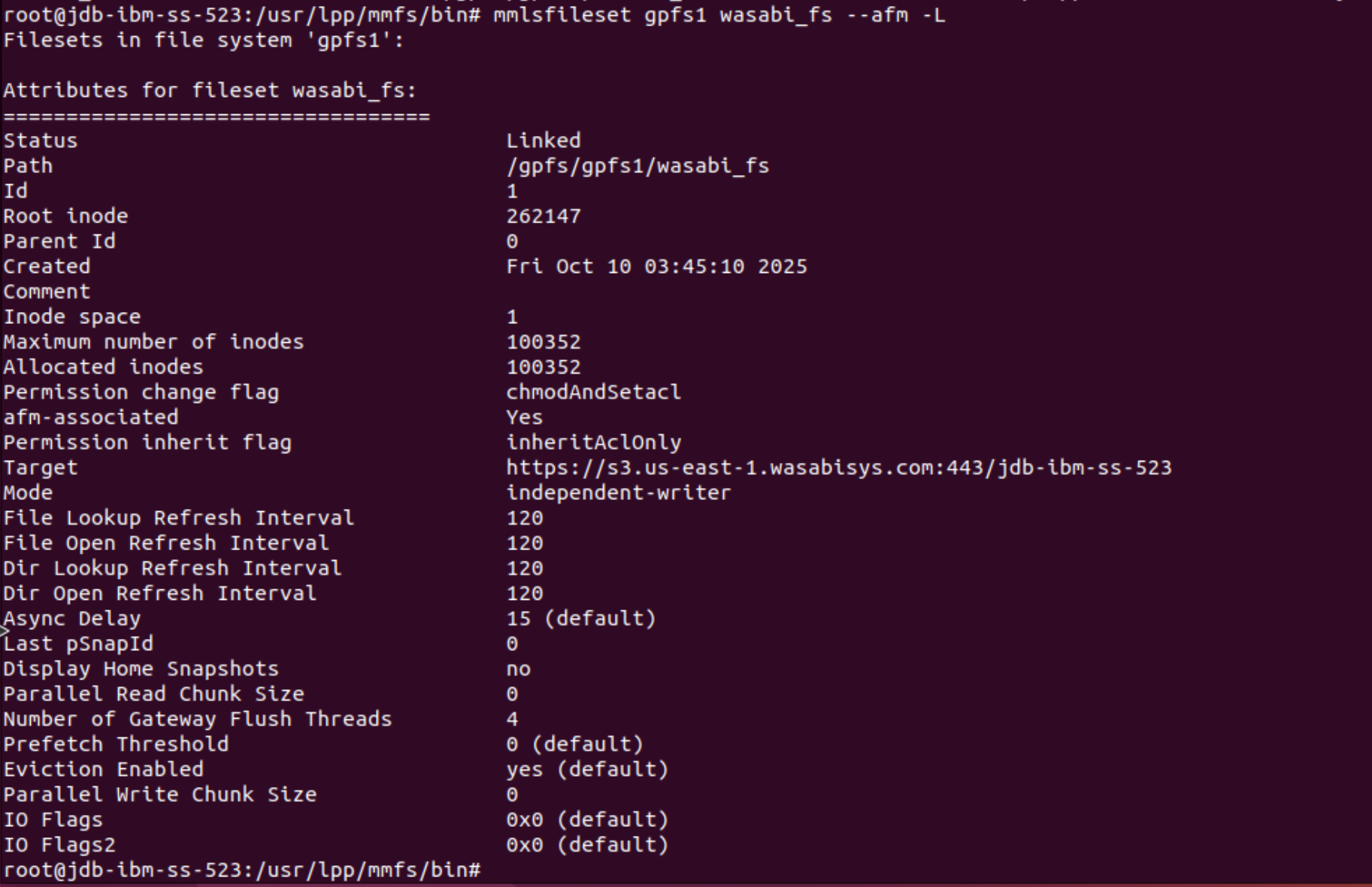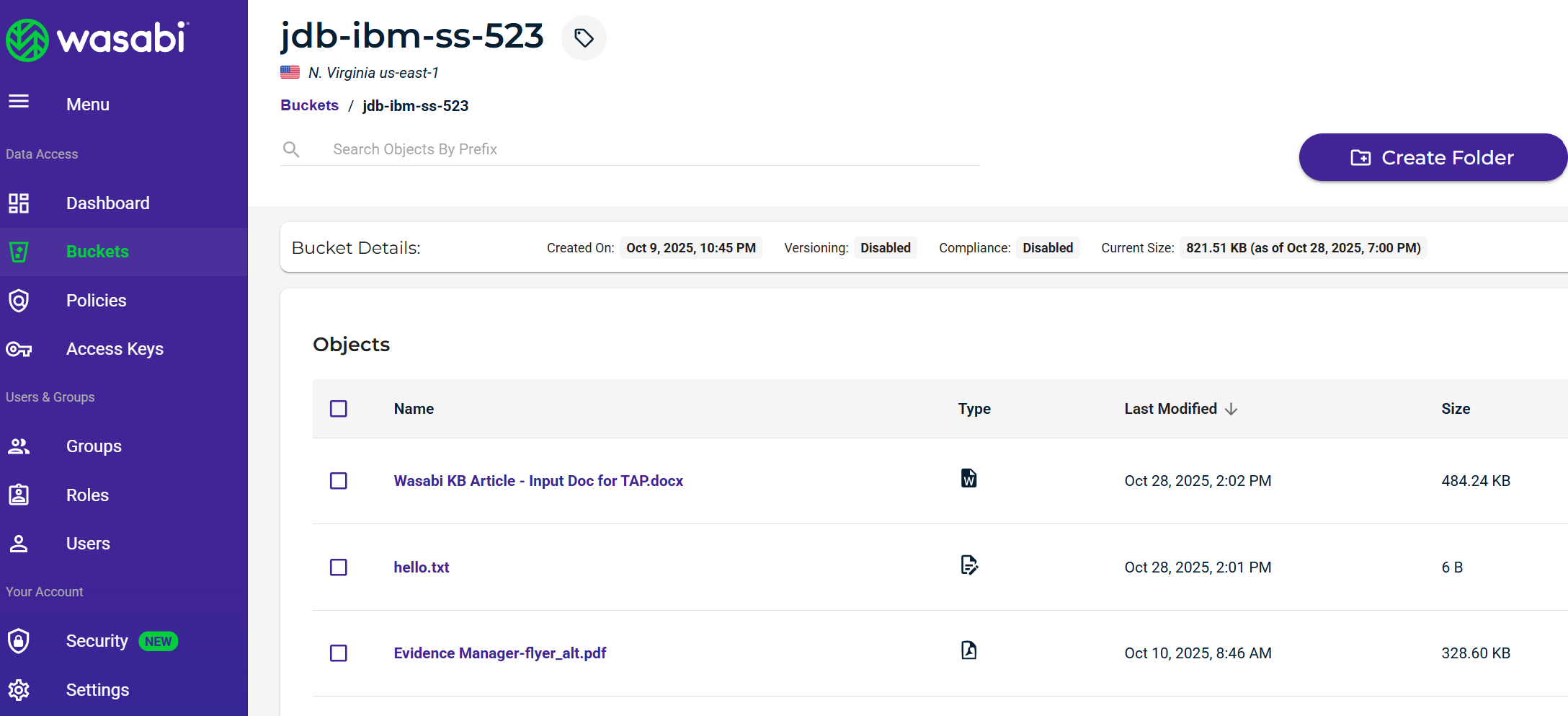How do I use IBM Storage Scale AFM (Active File Management)with Wasabi object storage?
IBM Storage Scale AFM has been validated with Wasabi Object Storage. AFM to Cloud Object Storage allows associating an IBM Storage Scale fileset with a cloud object storage such as Wasabi. Customers can use cloud object storage to run workloads such as mobile applications, backup and restore, enterprise applications, and big data analytics, file server. These workloads can be cached on AFM to cloud object storage filesets for faster computation and synchronize back to the cloud object storage server.
Prerequisites
IBM Storage Scale 5.2.3 or greater
AFM Gateway Node installed with IBM Storage Scale GPFS POSIX Client
TCP Port 443 Outbound on Gateway Node for https access to Wasabi endpoint
allowlisting URLs is recommended
Reference Architecture Diagram
.jpg)
Configuration
Wasabi Bucket and Key Creation
Store your Wasabi Keys on the Scale Side.
mmafmcoskeys my-wasabi-bucket:s3.us-east-1.wasabisys.com set AccessKeyID SecretKeyID This will bind the credentials to the “bucket:endpoint” pair for AFM’s use.

Create and link the AFM <> Wasabi Fileset
Create a fileset that syncs with your Wasabi bucket (choose an AFM mode - SW - Single Writer, IW - Independent Writer, RO - Read Only, LU - Local Updates) More details can be found in the IBM Storage Scale Fileset Operation Modes documentation.
mmafmcosconfig filesystemname filesetname --endpoint https://s3.us-east-1.wasabisys.com --bucket my-wasabi-bucket --mode sw --object-fs --xattr --acls --directory --object --ssl-cert-verify --dir /gpfs/fs1/wasabiVerify Attributes of Fileset.
mmlsfileset filesystemname filesetname —afm -L
View Filesets.
mmlsfileset filesystemname —afm
View and Verify the State of the AFM Wasabi Fileset.
mmafmctl devicename getstate

View Data in fileset.
ls -lsh FilesetPath
Log in to your Wasabi bucket and verify the data exists there as well.
